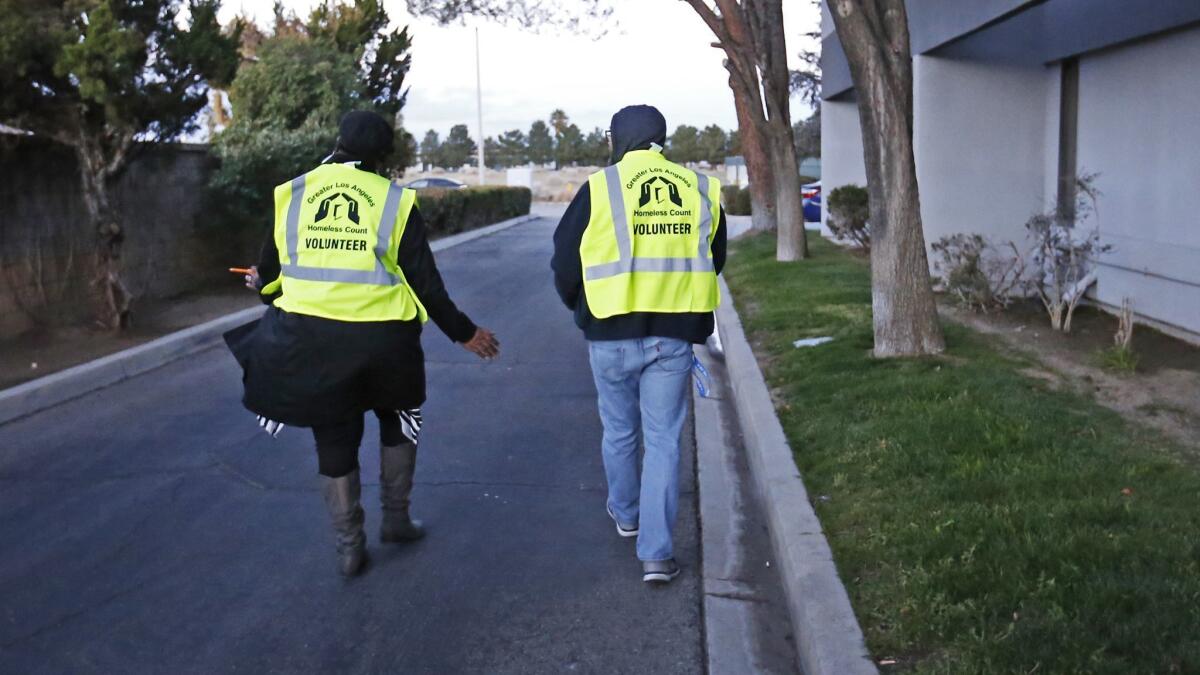Statistical error inflated last year’s homeless count by more than 2,700

- Share via
After discovering an error in the 2017 homeless count, statisticians at USC have reduced last year’s estimate of the county’s homeless population by nearly 5%, officials said Friday.
The Los Angeles Homeless Services Authority removed the 2017 homeless count report from its website Friday to make the correction, reducing the estimated number of homeless people in the county to 55,048, or 2,746 fewer than initially reported.
The new total lowers the reported growth in homelessness last year from 23% to about 17%. The adjustment will also affect any increase or decrease in this year’s count due to be released later this month.
A much larger effect appeared in the youth count, which was the source of the error and was reduced by more than half. From 5,979, representing a 61% increase across the county, the adjusted number of 3,233 is a 13% decrease.
Tom Waldman, spokesman for the homeless authority, said the adjusted count would not affect the agency’s policies regarding younger homeless people.
“Our efforts continue unabated to direct and advocate for the resources needed to serve this vulnerable population,” Waldman said in an email.
Though resulting from a human error, the shifting numbers highlight the uncertainties in estimating the size of the homeless population, especially tracking changes from year to year as methodologies change.
Indroduction of a special youth count in 2016 led to conflicting interpretations of that year’s increase, depending on whether the higher youth number was attributed to actual growth or a more accurate estimate.
Over the years, the count methodology has changed in several ways. Statistical methods used to impute numbers in census tracts that were not physically counted have been phased out as the volunteer force grew large enough reach every tract.
But a weighting system is still used to estimate the number of people in each tent or vehicle noted by the counters. Those weights were changed last year when the homeless authority switched contractors from the University of North Carolina to USC.
The youth count, added in 2016, still relies on a sample of census tracts and uses statistical modeling to come up with numbers for the tracts that are not counted.
A coding error in that calculation resulted in the inflated number, said Ben Henwood, project manager for the USC team that analyzes the count.
In a formula to determine a weight for each census tract, the probability of a tract being sampled was inserted instead of its inverse, Henwood said.
UPDATES:
5:00 p.m.: This article was updated with slight revisions to the youth homeless figures.
This article was originally published at 4:45 p.m.
More to Read
Sign up for Essential California
The most important California stories and recommendations in your inbox every morning.
You may occasionally receive promotional content from the Los Angeles Times.











